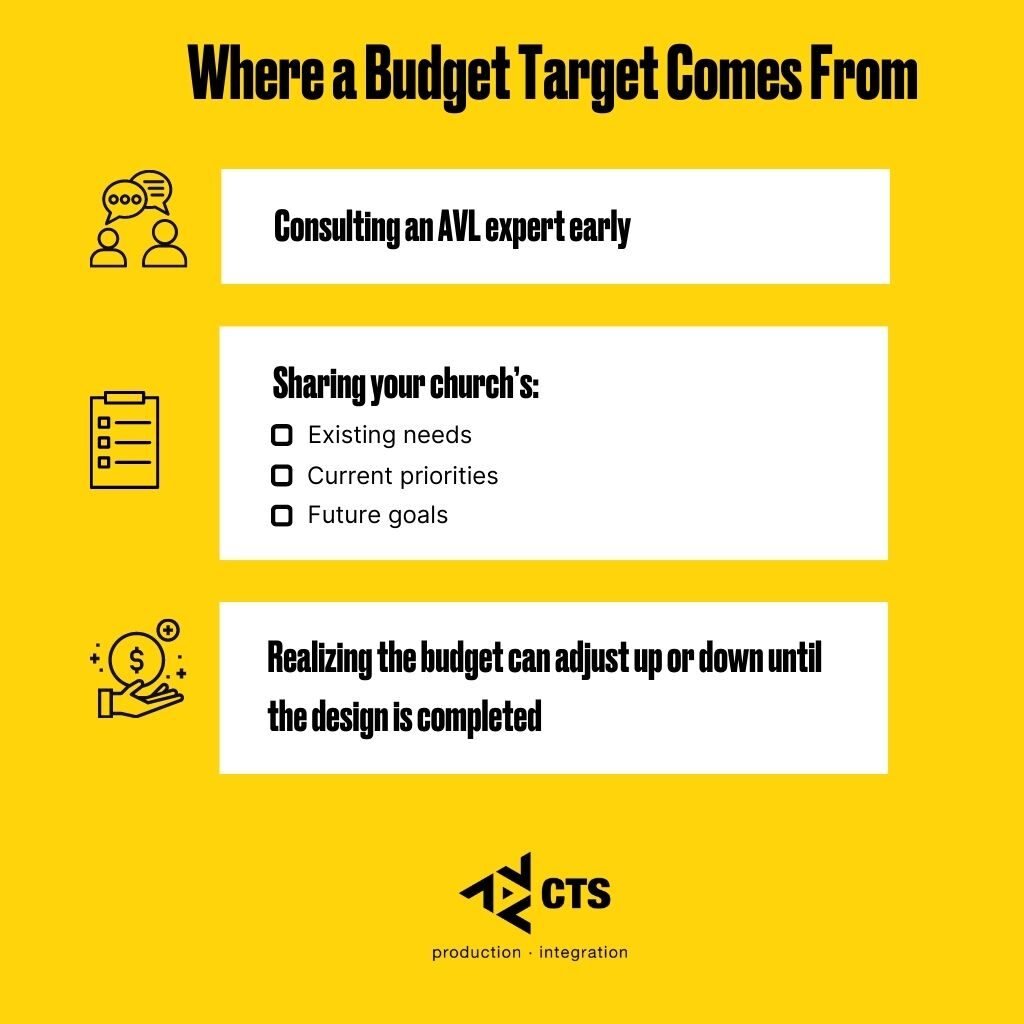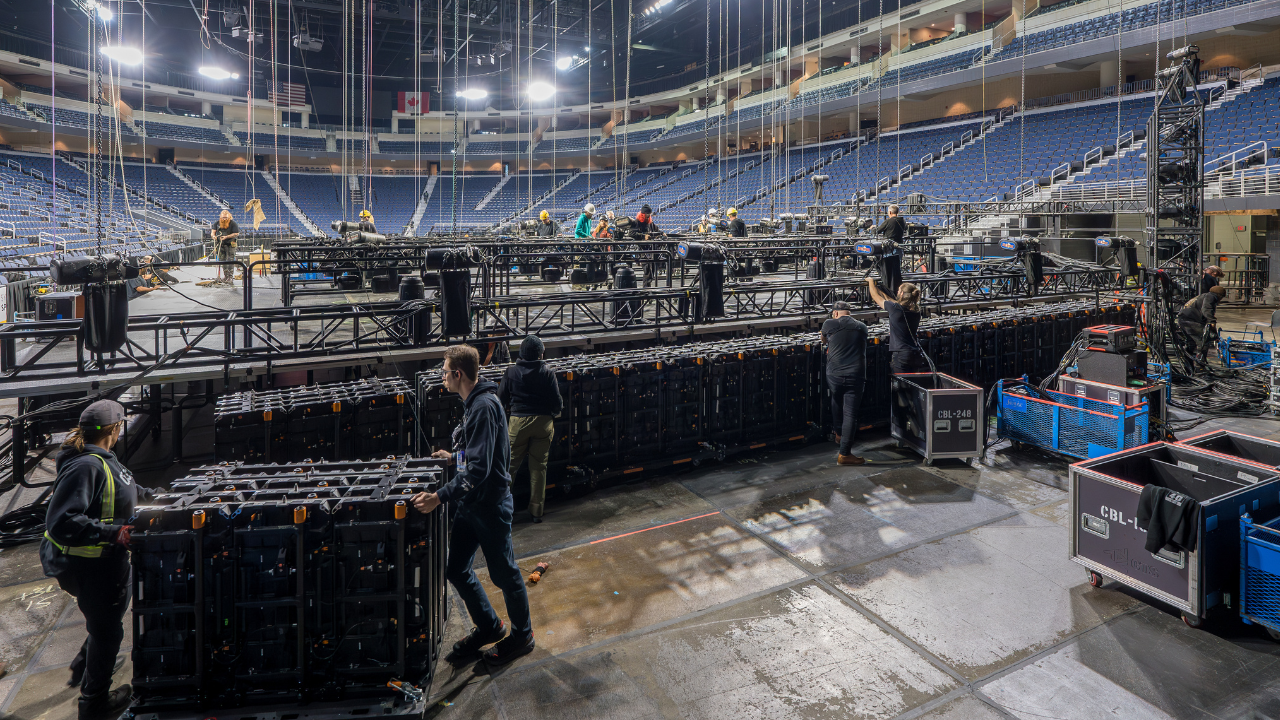How Is a Fixed Budget Different From a Budget Target?
Published on: Tuesday, June 28, 2022 - 7:00am

Frequently in new construction projects or large renovations, churches meet with an architect and/or a general contractor before talking with an AVL specialist. It makes sense; they’re trying to start the project planning, and the architect and GC typically carry the largest scope in a project.
The challenge is that architects and general contractors are typically not the most appropriate teams to provide a good budget estimate for the AVL portion of the project. This is primarily due to the fact that the AVL scope is one of the few segments of a project where a seemingly simple change in functionality can dramatically impact the overall project budget. These nuances are the reason that an AVL partner is needed in the very early stages.
Where Do Early Budgets Come From?
In some cases, architects or general contractors use a formula of price per square foot or price per seat for estimating budget, including AVL budget. These formulas stem from historical data they’ve accumulated from designing and building for many different churches over the years.
While historical data and analytics are not to be ignored, variance and nuance have to be considered as well. One common example is a megachurch with a high focus on production value; they will undoubtedly prioritize the AVL budget much more than a small or mid-size church.
Another more nuanced example occurs when evaluating two churches of similar size in the same general area of the country. These two churches may be building the same size building and main worship space, but if one prioritizes even one segment of AVL production higher than the other, it could cause a swing in the overall budget that equates to six figures or more.
Early AVL budgets so often come out of an amalgamation of discussions with the architect/general contractor and friendly advice from other churches. But if development of AVL budgets is done without experts who understand the nuances of the church’s priorities and how they impact the budget in real life, you end up with a budget that is theoretical but lacking in the specificity for your project.
Even though many people view an initial budget as a starting place in the planning process, once it’s written down, it can be difficult to change. It becomes fixed in the minds of planners. It’s what you fundraise for, and what you tell your congregation. And your project gets locked into a budget that might not come close to achieving the church’s goals.
As a result, you have to work backwards to fit your needs into the budget instead of creating a budget that will meet your needs.
Use a Budget Target
We all wish construction was an exact science, especially when it comes to budgets. However, over the last few years we have all learned that if you hold too tightly to your early budgets, you will end the project with more grey hairs — or fewer hairs in general.
Many years ago, we started using the term “budget target” with our clients. There’s no magic in this terminology other than the fact that it helps remind people that until there is an actual system design, the budget should be held loosely.
A budget target is a budget that’s based on the church’s actual needs, desires, and priorities and is determined through conversations with your AVL integrator. Only an AVL expert can look at your existing needs, current priorities, and future goals and determine a budget target that is appropriate for your specific project.
To get to this budget target quickly, it’s important to start having those conversations with your AVL integrator early in the process.
A budget target differs from a fixed budget by acknowledging that early budgets should be held loosely. It’s a budget target because it’s what you’re aiming for, but until a design is completed, it’s difficult to know if the budget will achieve the primary goals of the project.
As you work through the design process with your architect, general contractor, and AVL integrator, you might find that your preferences for AVL aren’t lining up with the budget target. Maybe you need to allocate more money to AVL, or maybe you discover you can spend less money.
By viewing an early budget as a budget target, you will be more prepared for the twists and turns that come from the design and construction process. Most importantly, you avoid being forced into a bad decision because you built a fixed budget based on assumptions early in the process.

Take a Master-Planned Approach
CTS believes in the master-planned approach to design. This means really getting to understand a church’s goals and culture to address its short-, mid-, and long-term needs.
The master-planned approach means we need to fully understand what’s behind a project and its ultimate goals so we can make sure those designs serve you as your church grows and changes.
Sometimes, a master-planned approach means iterating. If you have a set budget to work with, for example, and discover it won’t accomplish everything you need, a master-planned approach helps you prioritize the most pressing needs first and plan the best way to expand and grow in the future.
Like a master-planned community, the design might start with a handful of houses, but it ends up with 1,000 homes, a market, and an elementary school. The initial neighborhood is small, but it’s functional and it’s built with the future in mind.
In contrast, a more theoretical early budget combined with a more narrow design approach will force difficult compromises and limit your functionality and long-term impact.
Budget for the Long Run
We completely understand that churches can’t begin project planning or run capital campaigns without a budget in mind. There has to be a starting point, and the congregation wants to know what goal they can work toward. This is why it’s so important to have the right teams at the table when developing these budgets.
CTS always respects our clients’ budgets. If you tell us you can’t spend over a certain fixed amount, then we will design everything to fit within that budget.
But if your budget is arbitrarily low, will you get everything you really need?
You don’t just need a sound system; you need a sound system that accomplishes a specific outcome for your church. What is that outcome?
It’s important to know whether your budget is driving your goals, or your goals are driving the budget. Usually it’s somewhere in between. By working with an informed budget target and a master-planned approach to design your project, you can find a healthy balance that serves the church well in the short and long term.



